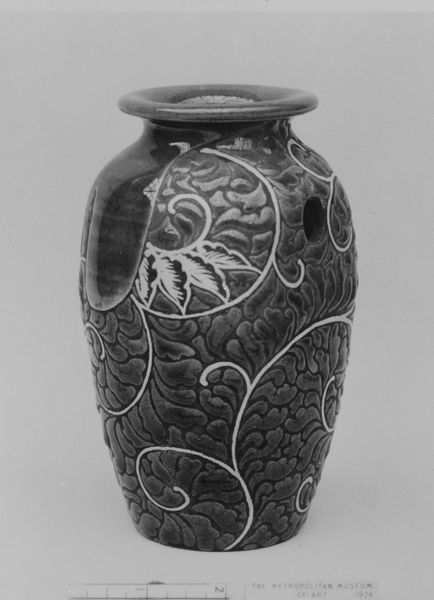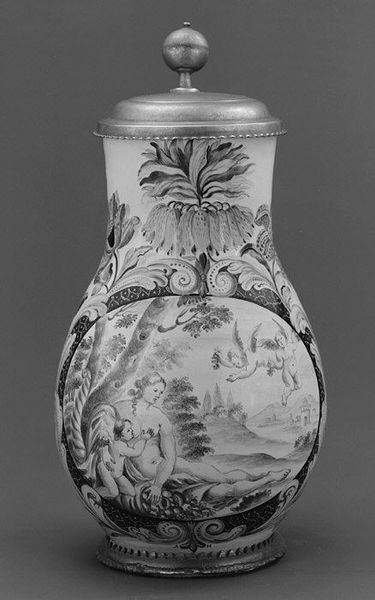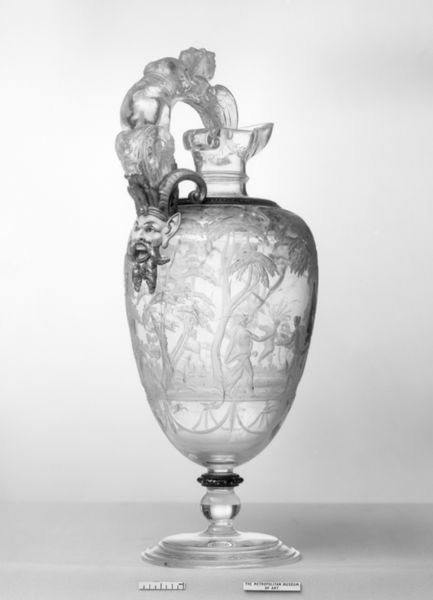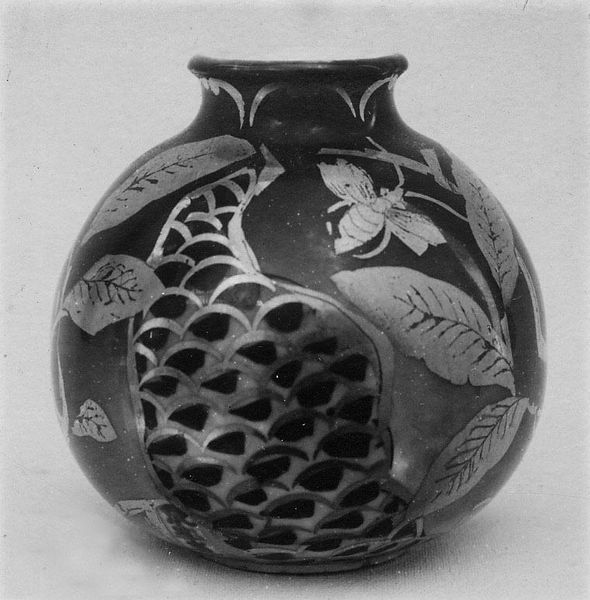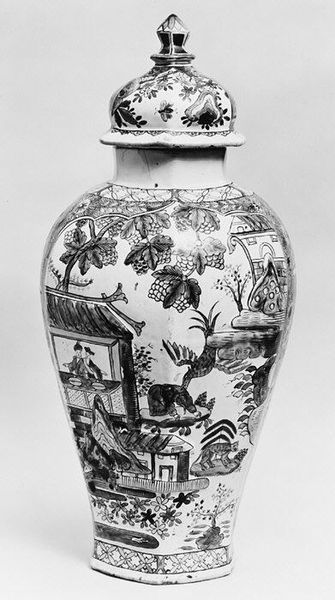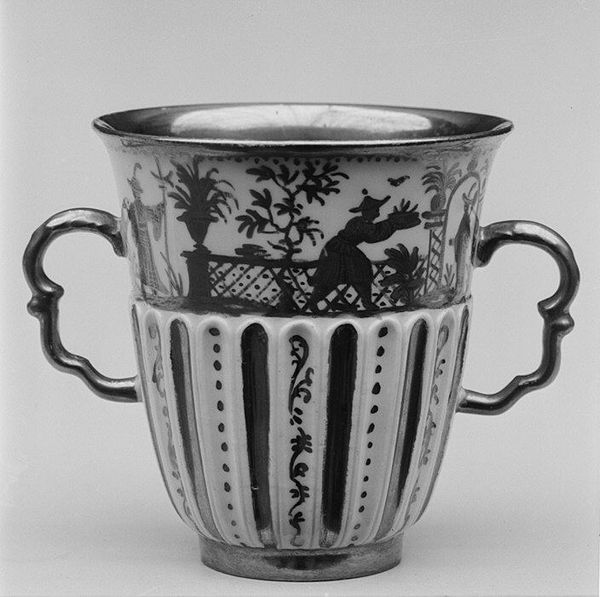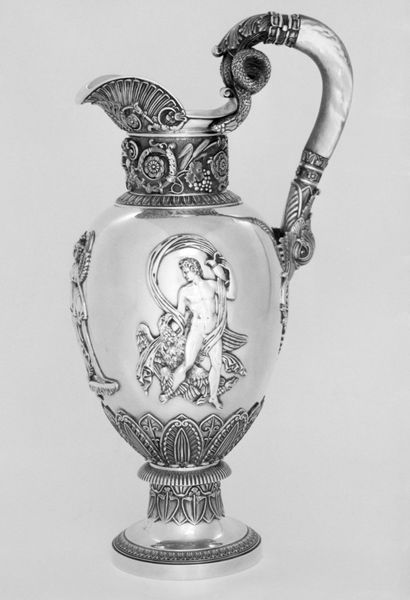
drawing, ceramic, ink
#
drawing
#
asian-art
#
ceramic
#
ink
#
ancient-mediterranean
#
orientalism
Dimensions: H. 3 5/8 in. (9.2 cm)
Copyright: Public Domain
This vase, now at the Metropolitan Museum of Art, was made by Eiraku Hozen in the 19th century. During this time, Japan was undergoing significant socio-political change which saw the decline of the samurai class and the rise of a merchant class. Hozen was a master potter, known for reviving and innovating traditional styles. The dragon motif, rendered in meticulous detail against a dark ground, symbolizes power and good fortune. It reflects the cultural values of the time, where craftsmanship was highly esteemed and art was deeply intertwined with social status. Dragons have different meanings, depending on their cultural context. In Western cultures, they can be symbols of evil and destruction. In East Asia, however, dragons tend to symbolize beneficent power. Hozen’s work embraces traditional representations, while shaping the artwork’s deep cultural and personal meanings.
Comments
No comments
Be the first to comment and join the conversation on the ultimate creative platform.
